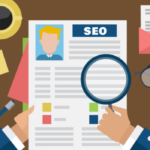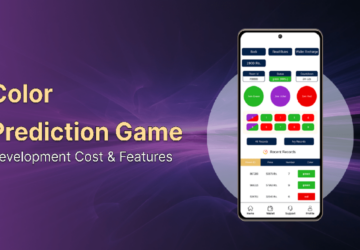The demand for SaaS products is growing every year and the global SaaS workload is predicted to reach 380 million by 2021. This means many things, but mostly that a SaaS company can be very profitable now and in the future.
However, before you can start selling your software, the first thing you need is a website. To create any successful website is not an easy task, but this is especially true for SaaS businesses since they sell abstract products customers can’t see.
When you make a successful website, you have two options. One of them is to put your SaaS business for sale after it’s reached the level of success you wanted and the other is to keep running and growing the business. But first, let’s see the five key elements of a successful SaaS website.
Helpdesk software
No matter what niche you’re in, it’s important to maintain a good relationship with your customers and give them opportunities to regularly resolve their queries and issues.
While your support team might be able to manage while you still have a small customer base, as your business grows, so will the need for more efficient customer support. To prevent your support staff from having too much work on their hands, you need to use help desk software.
Some of the benefits this software offers are:
- Faster ticket resolution. The processes that are involved in the administration of incoming helpdesk cases can be greatly simplified with helpdesk software. Every time a customer has a query, your software will automatically convert it into a ticket and assign an agent to it.
- Reduced ticket backlog. If you have any pending tickets, a backlog will form and it will become harder for your team to resolve queries. As most time-consuming tasks can be automated with this software, your ticket backlog will be significantly reduced.
- Real-time metrics. Every helpdesk software comes with advanced analytics and real-time metrics so you can always see the number of open and closed tickets as well as the average time required to close a ticket. With these metrics, you can monitor your support team’s productivity much easier.
- Effective resolutions. When you use good software, you will be able to organize all of your tickets and assign them to proper agents based on priorities to ensure all of them will be resolved.
Most helpdesk software charge a recurring fee, but there’s a workaround if you want to get all of the benefits and only pay a one-time fee. For instance, if you build your SaaS website using WordPress, you should consider getting a WordPress helpdesk plugin. This will help your customer service agents offer support via tickets and leave your customers satisfied.
Great web page structure
While every website is unique and there isn’t a formula for creating the perfect web page, there are still some great tips you should follow. Most SaaS companies include some common elements when creating their website, so it would be smart to do the same.
Elements you need to have include:
- Headline. All SaaS companies promote their products via a headline that’s short, easy to read, and compelling. The main job of your headline is to capture the visitor’s attention and briefly explain what your business does and what it’s best at.
- Hero element. No matter if you use a static image, animation, video, or a carousel, your hero element needs to inspire emotion in your website visitors and help them relate to your brand. Most companies use videos as heroes nowadays, as they can explain what the product is much quicker.
- CTA. Your call-to-action needs to be clearly distinguishable from the rest of the page. To do this, the button needs to be obvious, next to elements that help the visitor evaluate the offer, and be of a color that contrasts the rest of the page.
- Navigation bar. Your home page and even landing pages can benefit greatly from a navigation bar, as they give website visitors a chance to find out more about your product and pricing plans. The best choice for a navigation bar is to make it discreet and include only a limited number of links.
Clear pricing page
You can’t build a website without a dedicated pricing page. Some higher-level enterprise SaaS companies don’t state their prices and simply want to be contacted for a quote. If your product is more expensive and geared toward bigger teams, you can use this pricing tactic.
However, most lower-ACV companies state their prices clearly in a dedicated pricing page, most frequently in a three-their pricing structure. The best total number of paid packages sold by a SaaS company is three, usually divided into low, medium, and high categories.
If possible, you should list the prices for similar solutions your competitors offer and show how your solution offers more benefits for a smaller price.
Features page
Unfortunately, nobody will purchase your solution if you don’t tell them exactly all the features and benefits your product offers. On this page, you need to present features in a way that will show off your product’s benefits and explain who the product is made for and how it will address your ideal customers’ pain points.
The features page should include:
- Main features. Say what your product does in a simple, easy-to-understand language, and present those features so your target customer can see them as something they need for their business.
- Pain point question. As your product’s main purpose is to solve a pain point, state exactly what that pain point is, and find a way to resonate with your target customer. Don’t represent pain points in a negative way, just go straight to how they will be solved with your product.
- Benefits. Here you’re doubling down on the pain point and stating all the benefits your customers will have if they purchase your solution. State the benefits of all the different pricing packages as well.
- Social proof. Publish stories and testimonials from existing customers that explain how your solution helped them and solved an issue they had. It’s important to use their real name, photo, and company to prove the testimonial is real.
If you don’t have customer testimonials yet, don’t be afraid to ask your existing customers for one. Social proof is invaluable to your success, so make sure to collect as many reviews and testimonials as you can.
Web page optimization
Finally, no website would be complete without web page optimization. Search engine optimization plays a key part in discoverability and you need to focus on having an SEO-friendly website for the perfect growth.
If you have a well-designed and SEO-friendly website, you will be able to attract the right kind of website visitors, those who are looking for your product or something very similar.
To get the best results, you should research long-tail keywords to use on your landing page. Include these keywords in multiple places such as your URL path, headers, title tag, and different content you post on your website. It’s also a good idea to work with a SaaS SEO agency to make sure you are set up for long term success.
Final thoughts
Your business wouldn’t exist without your website, so building a good website should be at the top of your list of priorities. As long as you know all the important elements of successful SaaS websites and include the same on your site, you will certainly see an increase in customers and profit.








